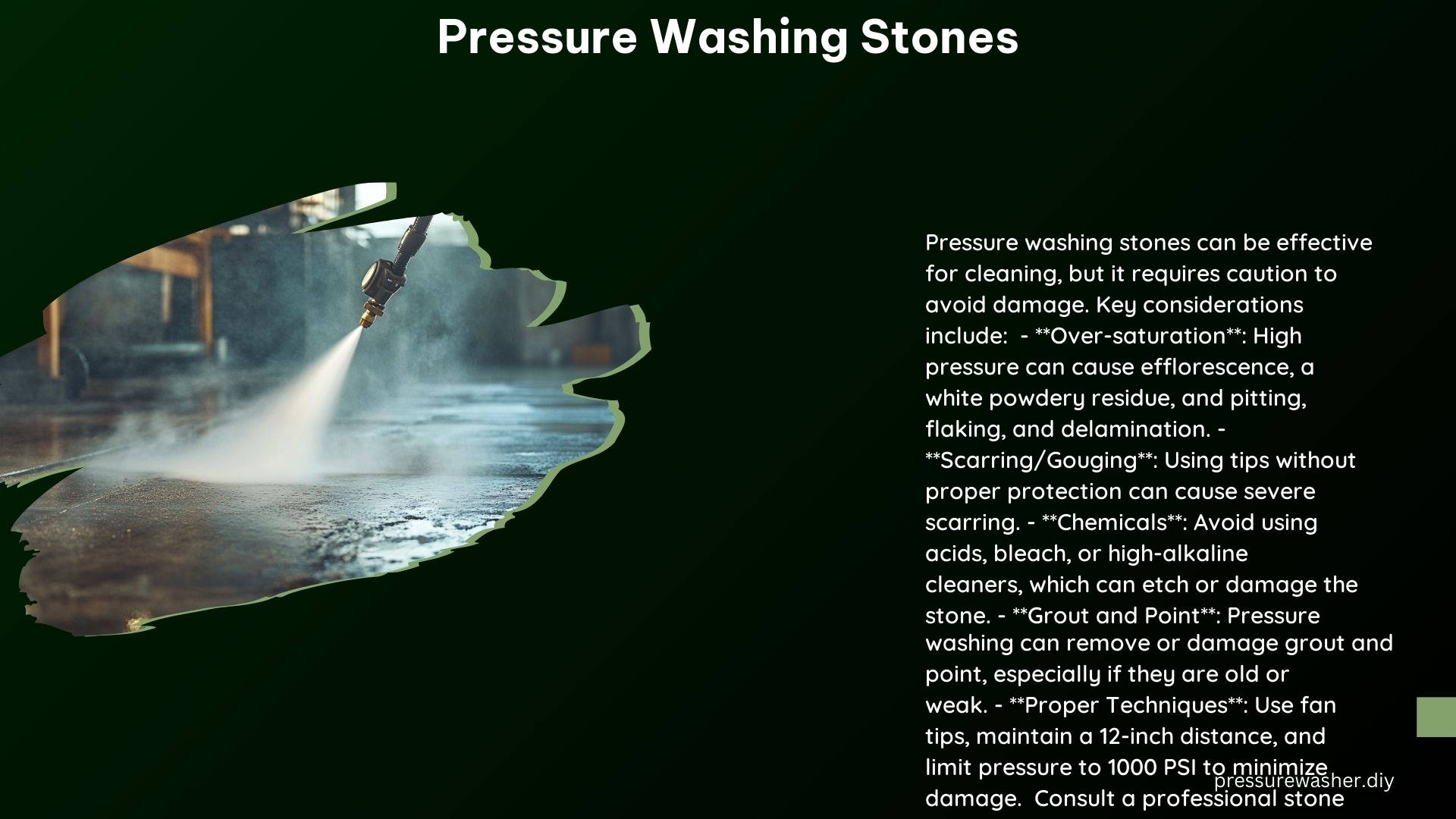Pressure washing stones can be an effective method for cleaning, but it requires careful consideration and caution to avoid damaging the stone or its joints. This comprehensive guide will provide you with the necessary information to pressure wash your stone surfaces safely and effectively.
How Pressure Washing Works
Pressure washing utilizes a powerful jet of water to blast away dirt, debris, and other contaminants from the surface of the stone. The water travels at high speed, hitting the stone with significant kinetic energy, which dislodges and removes the unwanted materials. This method is particularly effective for removing dirt, dust, mud, grime, stains, salt, mold, and even chewing gum from patios, driveways, and other stone surfaces.
Dangers of Pressure Washing

While pressure washing can be a highly effective cleaning method, it can also cause substantial damage to the stone and its joints if not done properly. Some of the potential dangers include:
-
Over-saturation: High-pressure washing can remove the natural patina of the stone, allowing water to seep deep into the stone and cause efflorescence, a white powdery residue that can lead to pitting, flaking, and delamination. This can significantly compromise the structural integrity of the stone.
-
Scarring/Gouging: Using a pressure washer without the proper tip can cause severe scarring and gouging of the stone surface, permanently damaging the appearance and texture.
-
Chemicals: Using inappropriate chemicals during the pressure washing process can cause etching, discoloration, and other forms of chemical damage to the stone.
-
Missing Grout and Point: Pressure washing can remove the grout and pointing between the stones, especially if they are soft or weak, leading to instability and potential structural issues.
Best Practices for Pressure Washing Stones
To avoid the potential dangers and ensure the safe and effective pressure washing of your stone surfaces, follow these best practices:
-
Inspect the Stone: Before beginning the pressure washing process, carefully inspect the stone to determine its softness, porosity, and any potential weaknesses or vulnerabilities.
-
Check Grout and Point: Examine the grout and pointing between the stones to ensure they are secure and not in a weakened state, as this can be compromised by the pressure washing.
-
Use Low Pressure: Never use a pressure washer with a pressure exceeding 1000 PSI (pounds per square inch) when cleaning stone surfaces. Higher pressures can cause significant damage.
-
Use a Fan Tip: Always use a fan-type nozzle or tip, rather than a zero-degree or pinpoint tip, to distribute the water pressure more evenly and avoid concentrated, high-impact areas that can lead to scarring.
-
Avoid Chemicals: Refrain from using bleach, acids, or other high-alkaline chemicals during the pressure washing process, as these can cause etching, discoloration, and other forms of chemical damage to the stone.
-
Keep a Safe Distance: Maintain a distance of at least 12 inches between the pressure washer nozzle and the stone surface to prevent over-saturation and high-impact damage.
Alternative Cleaning Methods
For more delicate or sensitive stone surfaces, consider alternative cleaning methods that are gentler and less likely to cause damage:
-
Brush and Water: Using a soft-bristle brush and clean water can effectively remove dirt and debris without the high-pressure impact of a pressure washer.
-
Steam Cleaner: A steam cleaner can gently and effectively remove dirt, grime, and other contaminants from stone surfaces without the use of high-pressure water.
-
Mild Detergents: Mixing a mild, pH-neutral detergent with water and using a scrub brush can be a gentle and effective way to clean stone surfaces without the risk of damage.
Technical Specifications
When pressure washing stones, it’s essential to adhere to the following technical specifications to ensure the safety and effectiveness of the process:
- Pressure: 1000 PSI or lower
- Tip: Fan-type nozzle or tip, not a zero-degree or pinpoint tip
- Distance: Maintain a distance of at least 12 inches between the pressure washer nozzle and the stone surface
Reference Links
- Can You Pressure Wash Natural Stone?
- Pressure Washing Caution
- Cleaning Stone
- Benefits of Pressure Cleaning Stone Surfaces
- Reddit Discussion on Cleaning Stone
By following the best practices and technical specifications outlined in this comprehensive guide, you can safely and effectively pressure wash your stone surfaces, ensuring their long-term beauty and structural integrity.
